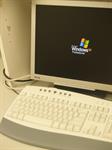
WHAT IS AN HTML PAGE?
HTML stands for Hypertext Markup Language. An HTML page is a text file that contains special characters called markup tags. The tags describe how the page should be displayed when you view it via a browser such as Microsoft Internet Explorer, Mozilla Firefox or Google’s Chrome.
Why Choose this course?
Learn to create web pages. Explore different methods of laying out an HTML page. Investigate some of the techniques employed by web developers to Navigate between web pages. Experiment with the use of images and background images on web pages. Use style sheets to change the look and feel of a web page. Build a web site based on a client design specification.
Is this course right for me?
This course is suitable for anyone who wants to learn programming in html. It can be a hobby or to create a website for your personal or business use. Keeping in mind that web development companies charge thousands of dollars to develop websites for businesses this course is a good investment.